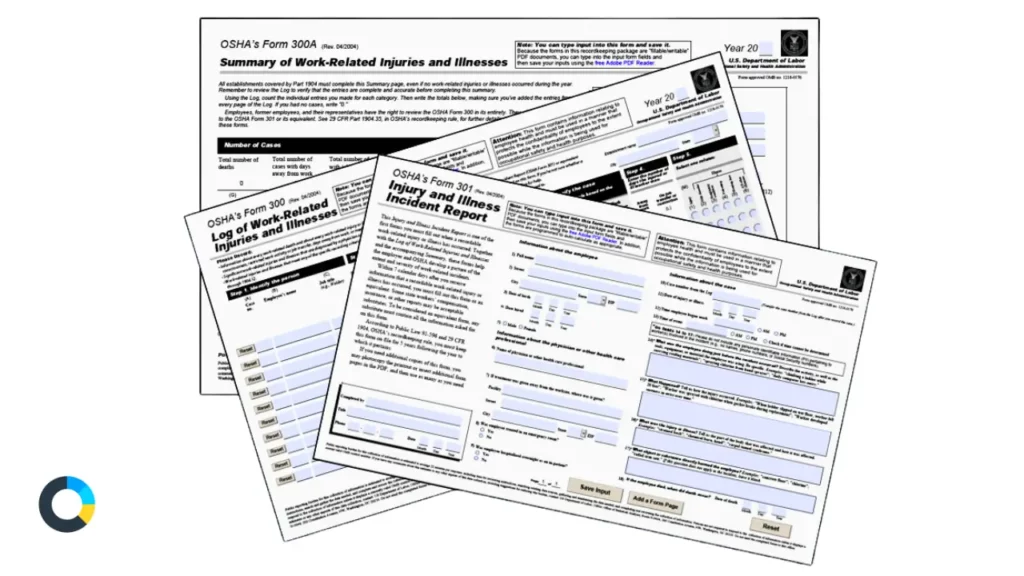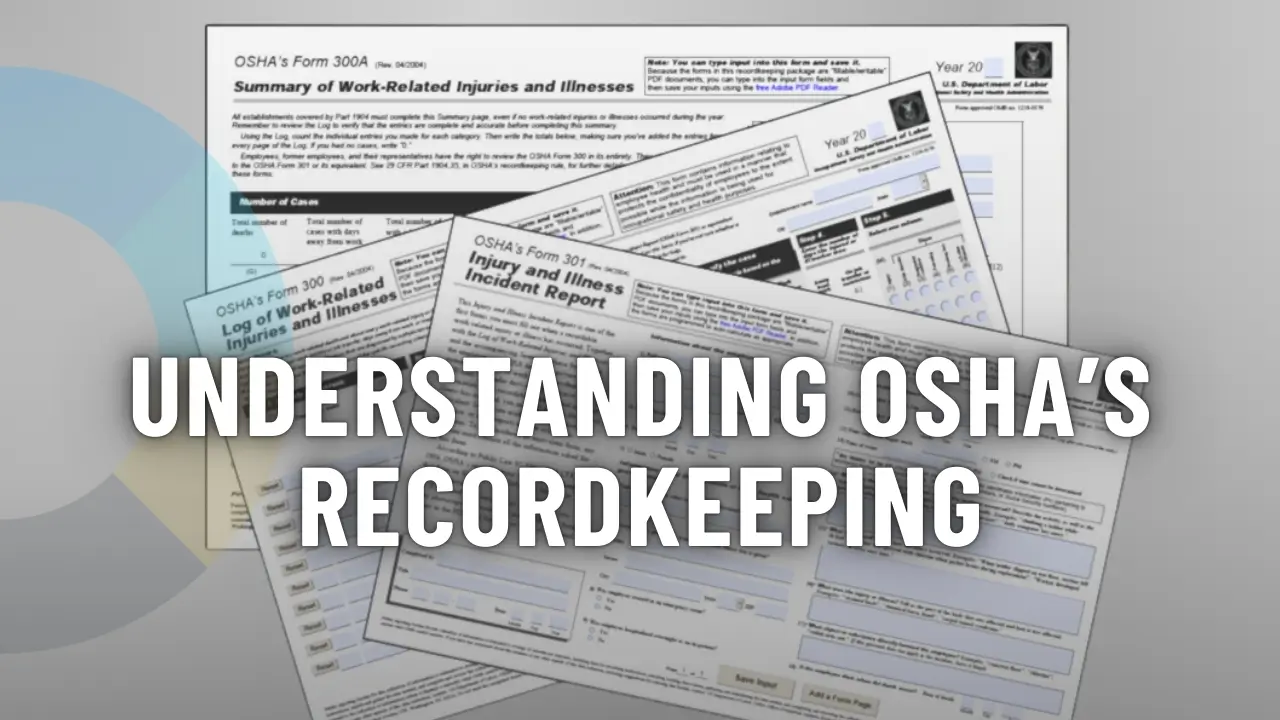Understanding OSHA’s Recordkeeping and Reporting
The Occupational Safety and Health Administration is responsible for ensuring workplace safety in almost every industry that exists in the United States. Among the important features of the occupational safety and health regulatory framework of OSHA are those features that have to do with recordkeeping and reporting requirements.
These regulations are set up to keep track of workplace injuries and illnesses, providing organizations with a view into hazards to be able to recognize and thus address them to make the workplace safer. It also discusses the recordkeeping and reporting regulations of OSHA and the forms to be used in recording and reporting some of these incidents at the workplace.
Background
The Occupational Safety and Health Act of 1970 founded OSHA, which requires employers to keep logs of workplace injuries and illnesses. It is not some bureaucratic duty, but it has an important role in making workplaces safer.
Proper record-keeping allows companies to track safety performance, ensure compliance with the law, and identify areas that need improvement. Moreover, it provides valuable information for taking preventative measures and mitigating workplace hazards.
According to OSHA, more than 2.8 million nonfatal workplace injuries and illnesses were reported in 2021. This underlines the importance of rigorous recordkeeping and reporting practices. These statistics depict that proper records should be kept not only for the safety of the people but also for following the OSHA regulations.
OSHA 30-Hour Construction Study Guide | OSHA Recordkeeping Requirements Forms 300, 300A, & 301 – Module 2
OSHA’s Recordkeeping Forms
OSHA has established specific forms that employers must use to document and report workplace injuries and illnesses. These forms are:
- OSHA Form 300: Log of Work-Related Injuries and Illnesses
- OSHA Form 300A: Summary of Work-Related Injuries and Illnesses
- OSHA Form 301: Injury and Illness Incident Report
Each of these forms serves a distinct purpose and is integral to maintaining comprehensive records of workplace safety incidents.
 OSHA’s Form 300
OSHA’s Form 300
OSHA Form 300 is commonly referred to as the Log of Work-Related Injuries and Illnesses. It provides details of each case with respect to the type of injury or illness, the part of the body affected, and the number of days away from work.
The Form 300 provides a clear, tabular format for case recording and contains all the needed information. It allows one to track the frequency and severity rate of work-related injuries and illnesses, which proves helpful in performing safety audits or hazard assessments.
In 2021, there were approximately 107,000 cases of nonfatal injuries and illnesses requiring days off work. This makes the case for proper recording on Form 300. Proper recording will enable trend analysis and the solving of persistent workplace safety issues by employers. Understanding OSHA 300 recordkeeping requirements is crucial for business.
OSHA’s Form 300A
OSHA Form 300A, Summary of Work-Related Injuries and Illnesses, is an annual summary of the information gathered on Form 300. The form shall be posted in a conspicuous location at work from February 1 of the present year to April 30 of the following year.
It is a form that summarizes the total number of cases of work-related injuries and illnesses during the past year and includes the number of cases that resulted in days away from work, job transfer, or restriction.
Form 300A is important for the annual report, serving as a snapshot of workplace safety performance for employees and other stakeholders. This summary will assist them in referring to overall safety trends and any areas that may require further safety measures.
In 2021, the incidence rate for nonfatal cases of occupation-related injuries and illness cases stood at 2.8 cases per 100 full-time equivalent workers; this therefore shows the relevance of the accurate annual summary in Form 300A in following up on safety performance:
OSHA’s Form 301
OSHA Form 301, also called the Injury and Illness Incident Report, provides a description of each case. While Form 300 serves to maintain the inventory for all the injuries and illnesses, Form 301 requires information specific to that particular incident, including the date and time the injury occurred, description of the event, treatment, and so forth.
Every employer must complete Form 301 within seven calendar days of learning about the case. This form is crucial for a detailed analysis of the incident and for determining the exact conditions in which each injury or illness occurred. It provides a breakdown of the data reported on Form 300 by providing more specific information about each particular case.
A 2021 report states that these incident records, elaborate ones, like those obtained on Form 301, are used to identify major risk factors and implement measures to improve safety practices. Detailed reporting has been applied in sectors with high rates of injuries, such as construction and manufacturing, to identify exact hazards and provide targeted interventions.
Best Practices for OSHA Recordkeeping
Maintaining accurate and comprehensive OSHA records requires adherence to best practices to ensure compliance and effectiveness. Here are some key practices:
- Timely Documentation: Ensure that all incidents are recorded promptly. OSHA requires that Form 301 be completed within seven days of learning about an incident. Timely documentation helps in accurate recordkeeping and analysis.
- Detailed Entries: Provide thorough and detailed entries for each incident on Form 300 and Form 301. Include all relevant information such as the nature of the injury, the involved body parts, and any contributing factors.
- Regular Review: Conduct regular reviews of the records to identify trends or recurring issues. Regular analysis helps in addressing safety concerns and implementing preventive measures.
- Employee Involvement: Encourage employees to report injuries and illnesses promptly. An open reporting culture helps in maintaining accurate records and improving overall safety.
- Training: Train staff responsible for recordkeeping on OSHA requirements and best practices. Proper training ensures that records are maintained accurately and in compliance with OSHA regulations.
By following these best practices, organizations can enhance their recordkeeping processes, improve workplace safety, and ensure compliance with OSHA regulations.
Conclusion
OSHA’s recordkeeping and reporting requirements lie at the center of the support provided for workplace safety and health. Proper maintenance and filling out of Forms 300, 300A, and 301 will thus go a long way in efficiently monitoring and handling workplace injuries and illnesses. The forms provide data that are very useful in not only observing regulatory compliance but also in efforts to improve the general state of safety.
These forms can be used for detailed recordkeeping to track trends, resolve hazards, and provide preventive measures to reduce the risk of such incidents occurring again in the future. The statistics bear out that proper recordkeeping remains an important tool for improving workplace safety and keeping employees from getting injured or ill.





